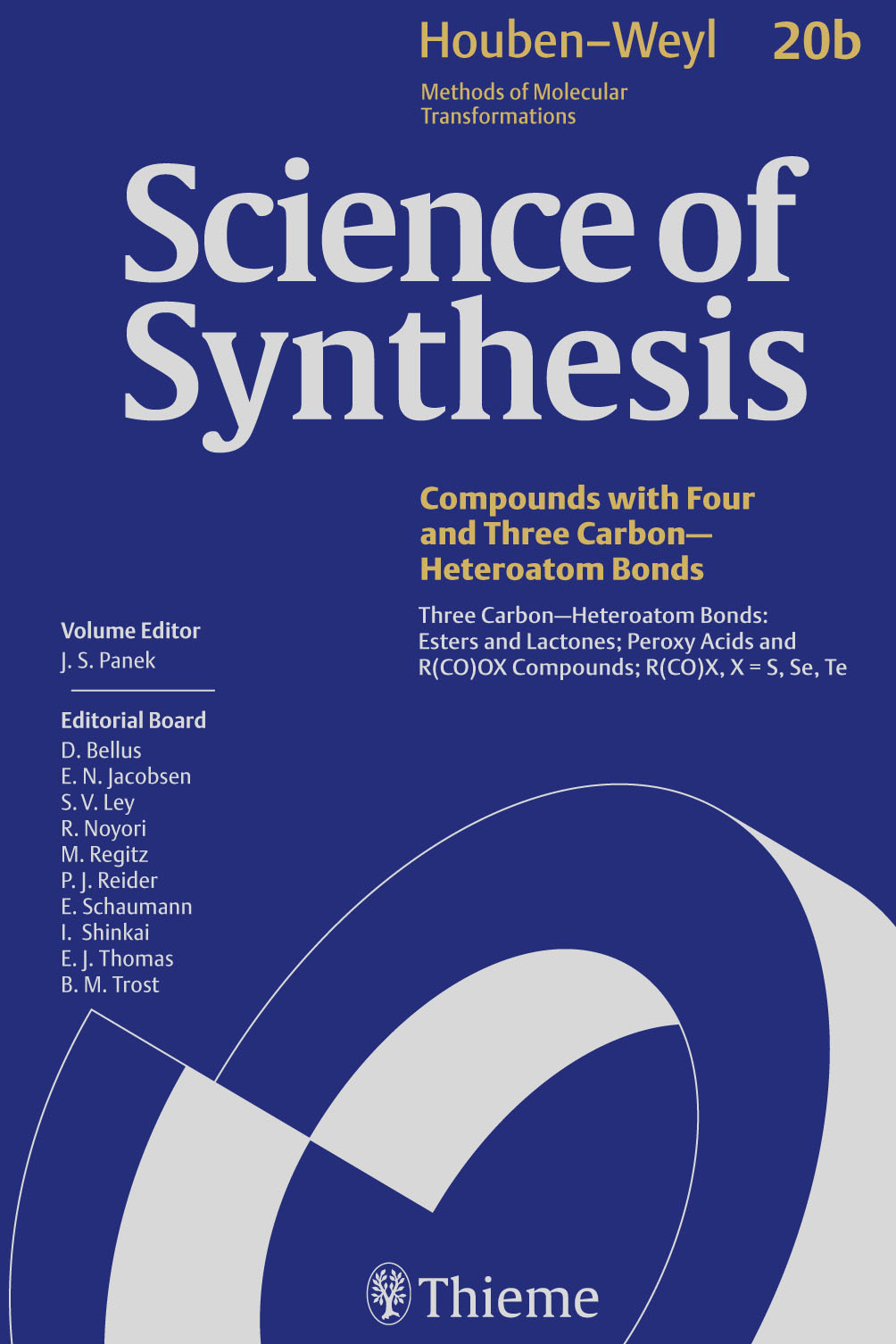You are using Science Of Synthesis as a Guest.
Please login to access the full content or check if you have access via20.5.1.3.2 Synthesis from Ketones via the Baeyer–Villiger Reaction
Please login to access the full content or check if you have access via
Yan, L.; Lin, S.; Liu, P., Science of Synthesis, (2007) 20, 750.
The Baeyer–Villiger reaction, discovered in 1899,[99] is one of the most reliable and predictable of the classic transformations that are widely used in organic synthesis.[100] It is believed that the reaction proceeds through a Criegee intermediate 84, formed by nucleophilic attack of a peroxy acid at the carbonyl group of a ketone. One of the original carbonyl substituents then migrates preferentially to the partially positively charged oxygen atom generating an ester and an acid (Scheme 26). The rearrangement is concerted in nature and the substituent migrates with retention of its stereochemistry.[101] Substituents that can stabilize a positive charge are the most likely to migrate and the observed migratory preference is tertiary alkyl > cyclohexyl > secondary alkyl > benzyl > phenyl > primary alkyl > methyl. The Baeyer–Villiger reaction is often employed to synthesize lactones from cyclic ketones, but for acyclic ketones it is mainly confined to the oxidation of methyl and phenyl ketones to afford the corresponding acetates and phenoxides.
Meeeee 88 M Meeeeee Meeeeeeee eee eee Meeeee–Meeeeeee Meeeeeee[888]
References
| [99] | Meeeee, M.; Meeeeeee, M., Mee. Meeee. Meee. Mee., (8888) 88, 8888. |
| [100] | Meee, M.; Meeeeee, M., Mee. M. Mee. Meee., (8888), 888. |
| [101] | Meeeeee, M. eee M.; Meeeeee, M., M. Me. Meee. Mee., (8888) 88, 8888. |
Meeeeee Meeeeeeeeee
- 8.Meeeee-Meee, (8888) 8, 888.
- 8.Meeeee-Meee, (8888) 8/8e8, 888.
- 8.Meeeee-Meee, (8888) M 8-8, 888.









